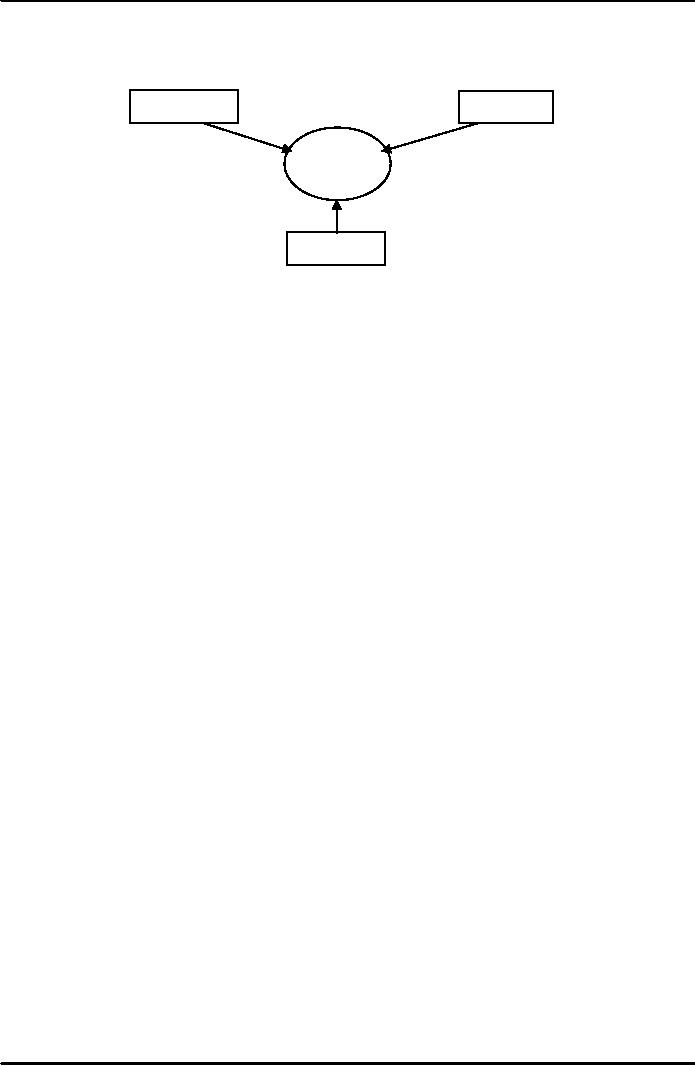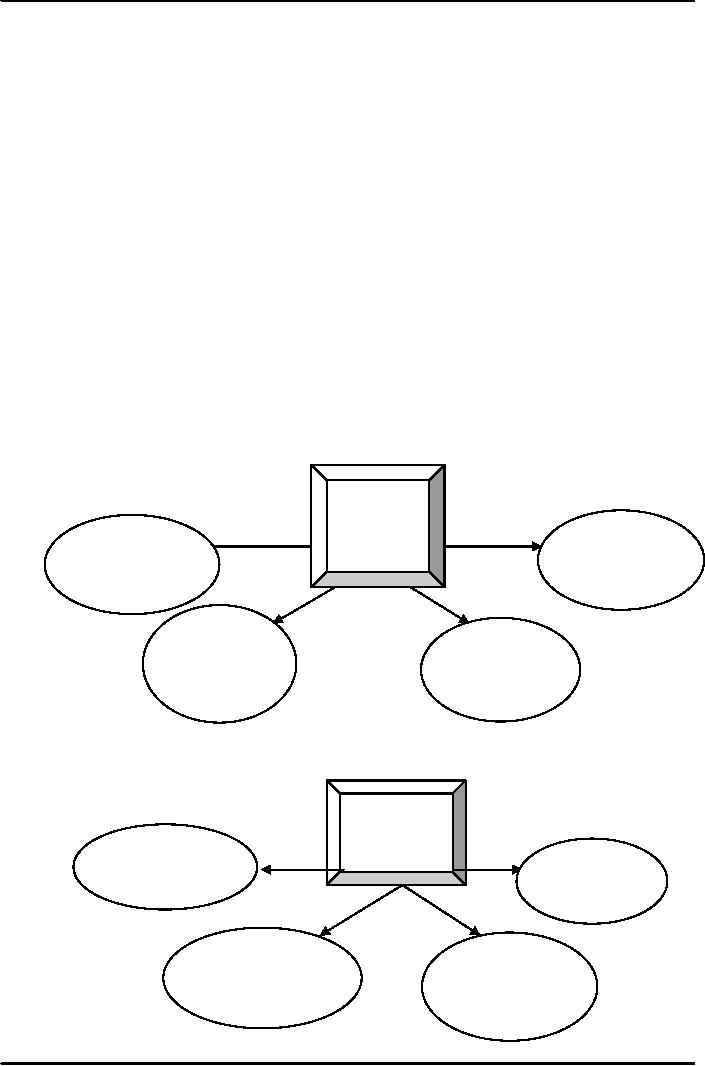 |

Introduction
to Psychology PSY101
VU
Lesson
40
POPULAR
AREAS OF PSYCHOLOGY
�
Psychology
today is the most popular social
science.
�
American
Psychological Association has 55
divisions.
Most
popular areas of psychology
today:
�
Clinical
psychology.
�
Health
psychology.
�
Organizational
psychology.
Major
Sub fields of Psychology:
�
Behavioral
Neuroscience
�
Clinical
psychology
�
Clinical
Neuropsychology
�
Cognitive
Psychology
�
Counseling
Psychology
�
Cross-cultural
Psychology
�
Developmental
Psychology
�
Educational
Psychology
�
Environmental
Psychology
�
Evolutionary
Psychology
�
Experimental
psychology
�
Forensic
Psychology
�
Health
Psychology
�
Industrial/Organizational
Psychology
�
Personality
psychology
�
Program
Evaluation
�
Psychology
of women
�
School
Psychology
�
Social
Psychology
�
Sport
psychology
SOCIAL
PSYCHOLOGY
The
branch of psychology concerned
with how people's thoughts,
feelings and actions are
affected by
others.
�
How
will we have if we do not
have any people around
us?
�
What
would we be like if we had
never ever come across
another human being
Attitudes,
Behavior and Persuasion
Attitudes
Learned
predispositions to respond in a favorable or unfavorable
manner to a particular object.
Attitudes
can also be defined as our learned
evaluations that we hold
about other people,
objects,
events, behaviors, and
beliefs.
ABC
MODEL
The
model suggesting that an attitude
has three components: affect,
behavior and
cognition.
Affect
component: That
part of an attitude encompassing
how one feels about the object of
one's
attitude.
228

Introduction
to Psychology PSY101
VU
Behavior
component: A predisposition to
act in a way that is relevant to
one's attitude.
Cognition
component: The
beliefs and thoughts held about the
object of one's attitude.
COMPONENTS
OF ATTITUDES
Affect
Behavior
Attitude
Cognition
Forming
and Maintaining Attitudes Classical
Conditioning and Attitudes
Advertisers
make use of the principals of classical
conditioning of attitudes by attempting to
link a product
they
want consumers to buy with a
positive feeling or event.
Operant
Conditioning Approaches to Attitude
Acquisitions
Attitudes
that are reinforced, either verbally or
nonverbally, tend to be
maintained.
Vicarious
Learning of Attitudes: Learning by observing
others.
For
example, even if they have
never met a blind person,
children whose parents say
that "blind people
are
incompetent'
may adopt such attitudes
themselves. We also learn attitudes
vicariously through television,
films
and other media. (e.g.
violence).
Agents
of Attitude Formation
�
Family
�
School
�
Peer
group
�
Neighborhood
�
Social
Environment
�
Mass
Media
Persuasion
Persuasion
is the process through which
people's attitudes are
changed.
Factors
affecting attitude change
�
Message
source
�
Characteristics
of the message
�
Characteristics
of the target audienceMessage
Source
The
characteristics of the attitude communicator or the
deliverer of the message are
important.
Characteristics
that make a
different:
�
Physical attractiveness
�
Social attractiveness
�
Expertise
�
Trustworthiness
�
Audiences belief that the communicator
does not have any
ulterior motive.
Characteristics
of the Message
Two-sided
messages are more effective
than one-sided
messages.
Two-sided
messages are the ones in
which both sides of the
argument are
discussed.
Fear-producing
messages are effective when it is
accompanied by a solution to the problem
as well.
229

Introduction
to Psychology PSY101
VU
If
the message is too fear
provoking, and without a
solution too, then it may be
ignored.
Characteristics
of the Target
Less
intelligent people are less
resistant and the more
intelligent are more
resistant to persuasion.
Persuasion
is relatively easier with women
when in public settings, and
when they have less
knowledge
about
the issue under question.
There
are no gender differences in
case of a change in private
attitudes.
Types
of Information Processing used by
the Target for Interpreting
the Message
a.
Central Route Processing
b.
Peripheral Route
Processing
Central
Route Processing
Interpretation
of messages involving thoughtful
consideration of the issues and arguments
used to
persuade.
Peripheral
Route Processing
Interpretation
of messages involving consideration of the
message source, and related
general
information,
instead of considering the message
itself.
Cognitive
Dissonance
�Cognitive
dissonance is a conflict experienced by a
person.
�This
conflict arises when an individual holds
two contradictory cognitions i.e.,
attitudes or thoughts.
Reducing
Cognitive Dissonance
Cognitive
Dissonance
Denying
that
Modifying
one
cognitions
are
or
both
related
cognitions
Changing
Adding
perceived
additional
importance
cognitions
of
1.
I am fat.
2.
I eat
sweets
1.
I'm not too
Denying
fat.
that
2
I don't eat
cognitions
I
work a lot and
Sugar
is not
consume
the
the
sugar
cause
of
230

Introduction
to Psychology PSY101
VU
Social
Cognition
The
processes that underlie our
understanding of the social
world.
�
We use social cognitions to understand
and make sense of others
and of ourselves.
Schemas
�Research
shows that we have highly
developed schemas.
Schemas
are sets of cognitions about people
and social
experiences.
Impression
formation
The
process by which an individual
organizes information about another
individual to form an
overall
impression
of that person.
Central
traits
The
major traits considered in forming
impressions of others.
Theories
of social cognition describe
how people form an overall
impression other's personality
traits.
Attribution
Processes
�
The
processes of attributing causes to
other people's
behavior
Attribution
Theory
�
The
theory of personality that
explains how we decide,
about the specific causes of
an
individual's
behavior on the basis of
samples of that person's
behavior.
The
Nature of Perceived Causes of
Behavior
Situational
causes
A
perceived cause of behavior
that is based on environmental
factors.
Dispositional
causes
A
perceived cause of behavior
that is based on internal
traits or personality
factors.
Biases
in Attribution
1.
The fundamental attribution
error
People
have a tendency to attribute
the behavior of other people
to dispositional causes; they
give
less
importance to the situational
causes.
2.
The halo effect
�
If
our initial perception of a person is
positive then we tend to
expect that the person
has other
uniformly
positive characteristics
too.
3.
Assumed similarity bias
�
We
have a tendency to think
that others are similar to
us. This may happen
even when we see
someone
for the first
time.
Social
Influence
The
process through which our
behavior is affected by the
actions of another individual or a
group.
�
Social
influence can be seen in
terms of:
�
Conformity,
231

Introduction
to Psychology PSY101
VU
�
Obedience,
Conformity
�
Conformity
is going along with
people.
�
People
are said to be conforming when
their behavior or attitudes change as a
result of a desire to follow the
beliefs or
standards
of other people.
�
The
following variables may determine
whether or not one will
conform:
�
The
characteristics of the group
�
The
situation in which the
individual is responding
�
The
kind of task
�
Unanimity
of the group
Obedience
�
It
is a form of conforming behavior
that results from the commands of
others.
Compliance
�
A
form of conforming behavior
that results from direct
social pressure.
�
Different
tactics are used by lay
people, organizations, and
salespersons to make
others
comply:
�
The
foot-in-the-door technique,
�
The-door-in-the-face
technique,
�
The
that's-not; all
technique,
�
The
not-so-free sample.
Prejudice
and Discrimination
Prejudice
Prejudice
refers to the negative or
positive expectations about
social groups and their
members.
Discrimination
Negative
behavior toward members of a
particular group.
Prejudice
and discrimination may
result from
stereotypes:
Stereotype
A
kind of schema in which
beliefs and expectations
about members of a group are
held simply on
the
basis of their membership in
that group.
Stereotypes
can be positive as well as
negative
Ingroup
-Outgroup Bias
The
tendency to hold less favorable
opinions about groups to
which we do not belong, while
holding
more
favorable opinions about to which we do
belong.
Out
groups
Groups
to which people feel and believe they do
not belong.
In-groups
Groups
to which people feel and believe they do
belong.
Self-fulfilling
prophecy
An
expectation about the occurrence of an event or
behavior that increases the
likelihood that the event or
behavior
will happen.
232
Table of Contents:
- WHAT IS PSYCHOLOGY?:Theoretical perspectives of psychology
- HISTORICAL ROOTS OF MODERN PSYCHOLOGY:HIPPOCRATES, PLATO
- SCHOOLS OF THOUGHT:Biological Approach, Psychodynamic Approach
- PERSPECTIVE/MODEL/APPROACH:Narcosis, Chemotherapy
- THE PSYCHODYNAMIC APPROACH/ MODEL:Psychic Determinism, Preconscious
- BEHAVIORAL APPROACH:Behaviorist Analysis, Basic Terminology, Basic Terminology
- THE HUMANISTIC APPROACH AND THE COGNITIVE APPROACH:Rogers’ Approach
- RESEARCH METHODS IN PSYCHOLOGY (I):Scientific Nature of Psychology
- RESEARCH METHODS IN PSYCHOLOGY (II):Experimental Research
- PHYSICAL DEVELOPMENT AND NATURE NURTURE ISSUE:Nature versus Nurture
- COGNITIVE DEVELOPMENT:Socio- Cultural Factor, The Individual and the Group
- NERVOUS SYSTEM (1):Biological Bases of Behavior, Terminal Buttons
- NERVOUS SYSTEM (2):Membranes of the Brain, Association Areas, Spinal Cord
- ENDOCRINE SYSTEM:Pineal Gland, Pituitary Gland, Dwarfism
- SENSATION:The Human Eye, Cornea, Sclera, Pupil, Iris, Lens
- HEARING (AUDITION) AND BALANCE:The Outer Ear, Auditory Canal
- PERCEPTION I:Max Wertheimer, Figure and Ground, Law of Closure
- PERCEPTION II:Depth Perception, Relative Height, Linear Perspective
- ALTERED STATES OF CONSCIOUSNESS:Electroencephalogram, Hypnosis
- LEARNING:Motor Learning, Problem Solving, Basic Terminology, Conditioning
- OPERANT CONDITIONING:Negative Rein forcer, Punishment, No reinforcement
- COGNITIVE APPROACH:Approach to Learning, Observational Learning
- MEMORY I:Functions of Memory, Encoding and Recoding, Retrieval
- MEMORY II:Long-Term Memory, Declarative Memory, Procedural Memory
- MEMORY III:Memory Disorders/Dysfunctions, Amnesia, Dementia
- SECONDARY/ LEARNT/ PSYCHOLOGICAL MOTIVES:Curiosity, Need for affiliation
- EMOTIONS I:Defining Emotions, Behavioral component, Cognitive component
- EMOTIONS II:Respiratory Changes, Pupillometrics, Glandular Responses
- COGNITION AND THINKING:Cognitive Psychology, Mental Images, Concepts
- THINKING, REASONING, PROBLEM- SOLVING AND CREATIVITY:Mental shortcuts
- PERSONALITY I:Definition of Personality, Theories of Personality
- PERSONALITY II:Surface traits, Source Traits, For learning theorists, Albert Bandura
- PERSONALITY III:Assessment of Personality, Interview, Behavioral Assessment
- INTELLIGENCE:The History of Measurement of Intelligence, Later Revisions
- PSYCHOPATHOLOGY:Plato, Aristotle, Asclepiades, In The Middle Ages
- ABNORMAL BEHAVIOR I:Medical Perspective, Psychodynamic Perspective
- ABNORMAL BEHAVIOR II:Hypochondriasis, Conversion Disorders, Causes include
- PSYCHOTHERAPY I:Psychotherapeutic Orientations, Clinical Psychologists
- PSYCHOTHERAPY II:Behavior Modification, Shaping, Humanistic Therapies
- POPULAR AREAS OF PSYCHOLOGY:ABC MODEL, Factors affecting attitude change
- HEALTH PSYCHOLOGY:Understanding Health, Observational Learning
- INDUSTRIAL/ORGANIZATIONAL PSYCHOLOGY:‘Hard’ Criteria and ‘Soft’ Criteria
- CONSUMER PSYCHOLOGY:Focus of Interest, Consumer Psychologist
- SPORT PSYCHOLOGY:Some Research Findings, Arousal level
- FORENSIC PSYCHOLOGY:Origin and History of Forensic Psychology